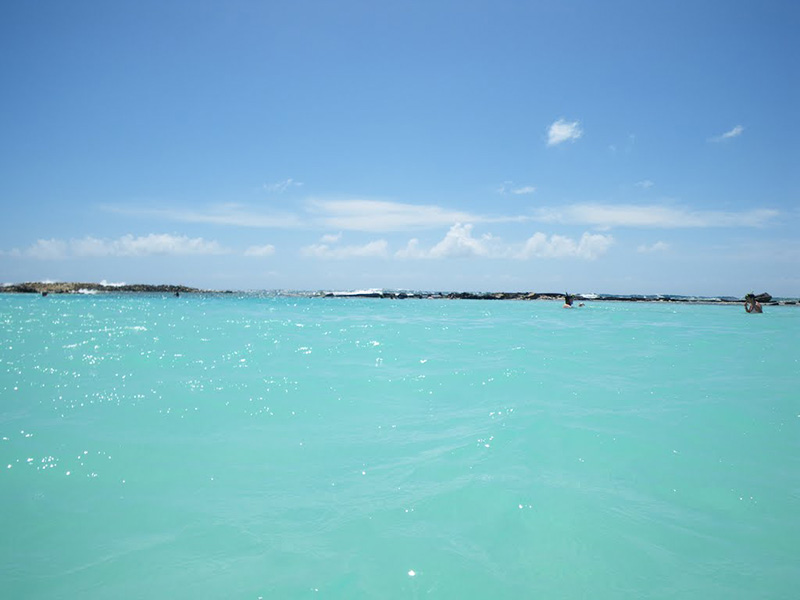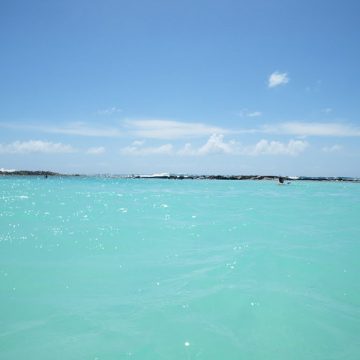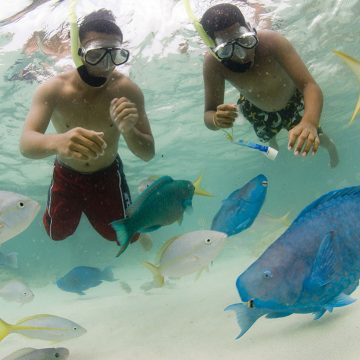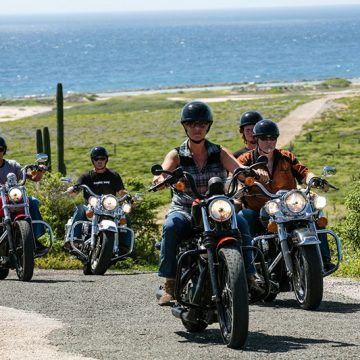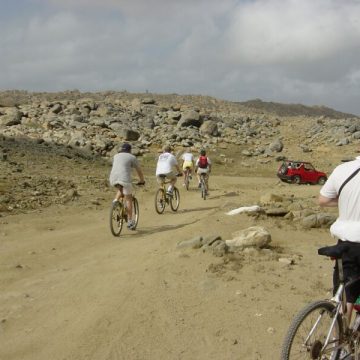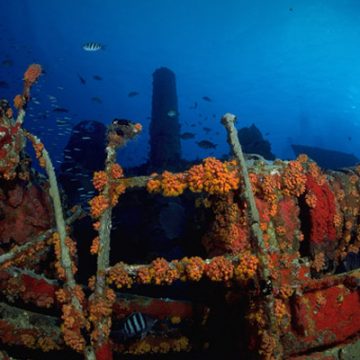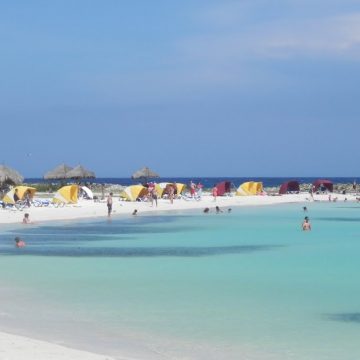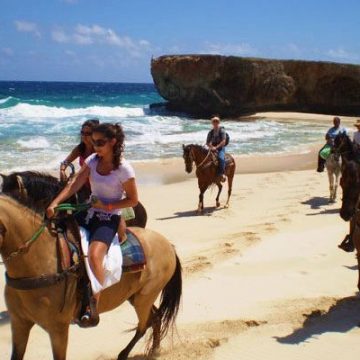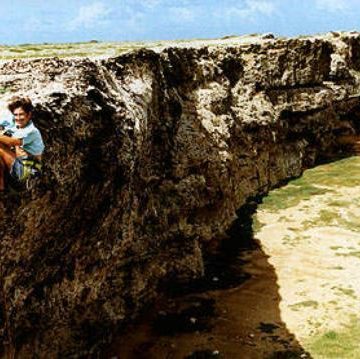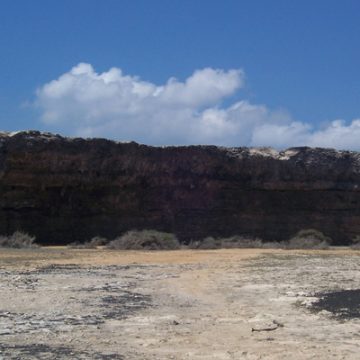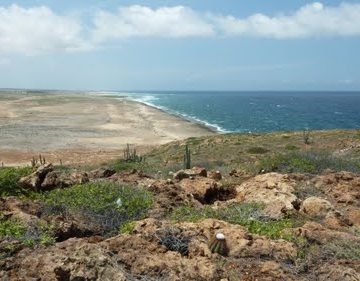—Joe Yogerst, Brand Publishing Writer
Courtesy of LA Times
Aruba marches to the beat of a different drummer than most of the Caribbean islands. At the southern edge of the sea, where the climate and landscapes are markedly different, this is a unique spot renowned not just for its beaches. Aruba also boasts a diverse topography, a rugged terrain and numerous options for outdoor adventure.
That’s not to say the historically Dutch island is without its turquoise lagoons and coconut-palm-fringed coastline. And for those who do love the beach, it’s important to know that Aruba enjoys more days of sunshine than just about any other Caribbean destination.
“Aruba’s location and weather are ideal due to it being located just outside the hurricane belt,” said Mark Cesareo, an Aruban Web designer and outdoor enthusiast.
The island’s incredible contrast between sea and stone indeed sets up all sorts of outdoor possibilities.
Kick up some dust on an off-road drive through surreal scenery
Aruba’s north coast and rugged interior remain undeveloped and largely uninhabited, a breathtaking blend of sand dunes and black stone beaches, giant boulders and strange volcanic formations. The plants also reflect the arid environment: prickly pear and towering kadushi cactus, aloe vera plants, and the eerie divi divi trees that are often bent completely over by the trade winds that sweep the north shore.
Aruba is perhaps best explored by jeep, all-terrain vehicle or dirt bike. You can rent your own — all it takes is a valid state driver’s license — and explore the island’s empty quarters with a map, GPS or nothing more than dead reckoning. Scoring some wheels is a breeze; you can get a rental at the hotel or the airport.
Half a dozen island outfitters organize guided off-road adventures that take in backcountry sights such as the 18th-century Alto Vista Chapel, the big-as-a-house Casibari Rock Formations, the ruins of the Bushiribana Gold Mill and the natural bridge at Seroe Colorado.
Bike, hike or ride horseback to a secluded spot
Eighteen percent of Aruba is protected within the confines of Arikok National Park, and it’s quite a treasure. Caves inside the park harbor a wealth of ancient Arawak Indian petroglyphs. With numerous trails amid pristine desert topography, Arikok is also ripe for hiking or mountain biking. Keep a sharp eye out for odd creatures totally unique to the island such as the whiptail lizard, burrowing Shoco owl and brown-throated Prikishi parakeet.
You can saddle up at Rancho Daimari for a rugged ride along the north shore and a chill session at the Conchi, a.k.a the Natural Pool, a secluded seawater swimming area where you can jump into waves that crash around volcanic holes. Or you can skip the ponies and head south to work up a sweat scaling the sea cliffs at Grapefield Climbing Area before cooling off with a swim or snorkel in the translucent waters of nearby Baby Beach (said to be so calm that even a tot can swim there).
After the sun sets, step into a full-moon nature hike with a local guide to the summit of 617-foot Jamanota (Aruba’s highest point), and then admire the Milky Way while floating on your back in the calm waters off Palm Beach.
“Taking a trip on horseback or a mountain bike can take you to some undisturbed areas where you can see the rugged and salty landscape of the coastline, or, when venturing more inland, you can explore the charms of the local kunuku [countryside],” Cesareo said. “Personally, I love mountain biking. The trails are spectacular and cater to different skill levels, from relatively light to very intense — definitely a great workout with spectacular views of Aruba’s rugged north coast.”
Get under the water and see what hides beneath
For a different kind of sightseeing trip, float atop Aruba’s turquoise waters on a stand-up paddleboard, which is a bit like a surfboard that you stand on while doing some low-impact rowing to navigate your way around.
“The Spanish Lagoon is a good spot to paddleboard because there are mangroves, the water is calm and it’s less windy than most places,” said Jereme van Dal, owner of Stand Up Paddle. “Various species of fish, stingrays, starfish and occasionally sea turtles can be seen while paddleboarding in Aruba.”
You’ll have to hold your nose and go under to get a more up-close-and-personal look at those sea creatures. Although the entire island is fringed by coral, the reefs on the leeward (south) shore offer the best conditions for diving and snorkeling. Underwater terrain varies from coral gardens in shallower depths to 100-foot walls that disappear into the deep blue sea.
Scattered along the south shore are 20 dive sites and diver-friendly wrecks such as the World War II German cargo ship Antilla, the century-old SS California and a 250-foot cement carrier called the Jane Sea, scuttled in 1988 in order to create an artificial reef and fish sanctuary. A handful of Aruban scuba dive operators organize regular trips to these undersea wreck sites, where you’ll be able to swim through the sunken machinery and see for yourself how it’s been repurposed by nature. It’s quite literally an immersive experience.
If you’ve never learned how to scuba dive, the Snuba and Sea Trek adventures at De Palm Island offer a sample of what it’s like to breathe beneath the sea. The latter includes an underwater walk through a 20-foot-deep coral garden and sandy bottom littered with a sunken aircraft and vehicles.

